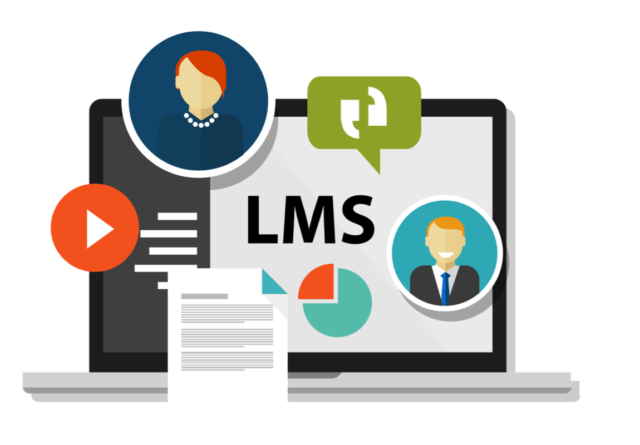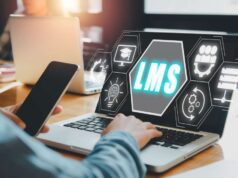
The rise of eLearning in the corporate world has given rise to the need for streamlining the delivery of the training material. A Learning Management System (LMS) is a software application designed to aid this requirement. It effectively enables the creation of course material and makes it possible to easily manage, document, and deliver training.
LMS can be extremely useful in organizing skill development and increasing productivity within your organization. Apart from providing an accurate track of the learning progress, it greatly reduces the learning time. It also considerably reduces course development time and cost, which makes it the most revolutionary training product.
The market is brimming with varying LMS solutions and it can get hard to make a choice. It is advisable to list the goals you want to achieve through an LMS for your organization. This list of must-have features in LMS solutions should help you choose one that is best suited to your needs:
Easy to use

The need for LMS is to attain a better-organized learning experience. This requires it to be easy to navigate and enable the seamless building of design material.
If you need to spend hours understanding how to use the LMS, the purpose of having one is lost. Therefore, it should have an interface that’s easy to understand and user friendly.
Recent studies show that the most common reason for a company to replace their existing LMS was to get a more user-friendly experience. Spending your valuable time, energy, and resources in learning the functioning of an LMS is in fact, counter-productive.
A user-friendly LMS makes course management a breeze and enables quick delivery of training content. Make sure you verify this during the free demo as well as during the trial.
Learning through mobile

This is one of the most powerful and important features that an LMS must-have. It goes without saying that mobile phones have taken over the world. Everything is on-the-go now, including training and eLearning. Having mobile support makes the learning process highly convenient.
Mobile learning is preferred as it delivers information in short segments. But having a responsive design is equally essential. This means the online content has to be optimized according to different screen sizes.
With an LMS that features mobile learning, including responsive design, learning for remote teams becomes very advantageous. Your LMS must support all types of mobile devices so that participation becomes easier for everyone devoid of their location. This will make learning effortless and learners will be able to complete training anywhere at any time.
Game-like elements

It has been proven that the use of fun game principles in eLearning increases user engagement and promises a higher rate of information retention. This technique is called gamification which encourages learning through socializing and competition. It features activities and processes to promote learning by applying game-like characteristics.
Gamification includes elements like leaderboards based on assessment results, badges for quizzes, rewards for specific achievements, and making progress visible through graphs/bars to motivate learners to compete in a healthy way. It ensures learner attention, challenges them, and compels them to finish the training.
A gamification based LMS ensures a higher rate of course completion, thus leading to performance improvement. It also brings a sense of achievement as the learner accomplishes the determined goals. This makes gamification a very important feature as it brings value to both the organization as well as the learner.
Collaboration

Another must-have LMS feature is the ease of collaboration through forums for discussion and the sharing of data. Does your LMS group discussions or video conferencing? If not, learners may need to seek external resources to interact with peers.
A good LMS supports all sorts of collaborative tools to promote social interactions, peer-to-peer discussion, and all other group activities. Having built-in collaboration tools allows a smooth exchange of ideas in a remote eLearning team.
This makes the exchange of information easy via Online messaging or discussion forums where everyone can share their feedback about the material or elaborate on certain points. For instance, having tools to organize webinars as a part of online training courses where learners can participate and ask concerns promotes user engagement.
Integrated learning

It is highly important for an LMS to incorporate asynchronous learning which allows the user to have control over the pace of learning. This eliminates the need for being available for a course or discussion at a set time.
At the same time, support for offline learning is also all-important. The ease of offline access in an LMS acknowledges the training progress of a learner and automatically updates their accomplishments.
An LMS that allows the deployment of online training content which can be downloaded for offline learning can make learning more expedient. With an offline tracking feature, a learner can go ahead with the training in the absence of an Internet connection, and their progress gets updated into the Learning Management System when the connection resumes.
Assessment of skills

Training without testing is futile. It is impossible to gauge the training impact without assessing performance. Certifications can help track improvement and measure the success of the training material.
Assessments help in identifying their grasp of the training content and allows you to provide customized learning solutions. Also, an LMS that supports online assessment methods shows the immediate effect of your training content.
Using dashboards to track course completion and showcase pending elements makes for an insightful report. This report can help identify learning patterns and shed light on key areas that require improvement.
Conclusion
The process of building a training program must be facilitated with the use of an LMS. Selecting the correct LMS for your business depends highly on your requirements. Depending on your requirements, the LMS you settle for must serve the purpose of enhancing the learning process. The results can become more enriching with the support of blended learning opportunities. Are there any other features that you think an LMS must definitely have? Let us know in the comments below. Alternatively, you can visit here for all the information you need about buying and using an LMS.












